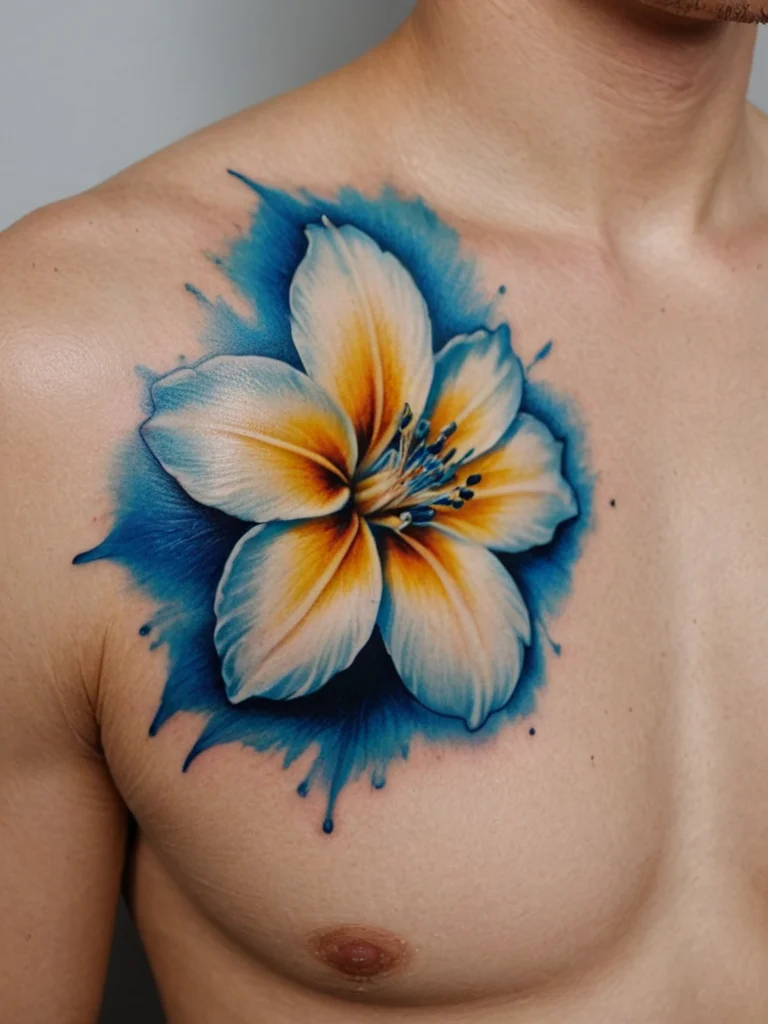The vibrant designs that adorn your skin tell a story, a testament to artistry and personal expression. But have you ever stopped to wonder about the very essence of these tattoos – the ink itself? Behind every shade of crimson, every deep black outline, and every subtle gradient lies a complex and fascinating process of creation. Tattoo ink isn’t just a simple dye; it’s a carefully formulated mixture of pigments, carriers, and other ingredients, designed for both aesthetic appeal and long-term stability under the skin. Understanding how tattoo ink is made not only demystifies the process but also highlights the importance of quality and safety in this intricate art form. For both aspiring collectors and seasoned enthusiasts, a glimpse into the manufacturing of tattoo ink offers a deeper appreciation for the tools of the trade and the science that makes permanent body art possible. Tattoo artists, in particular, place immense importance on the inks they use, as the quality of the ink directly impacts the final look, healing, and longevity of the tattoo. We will explore the fundamental components, the journey from raw materials to the finished product, the science behind color and durability, the critical aspects of safety and regulation, and finally, what you and your chosen artist should consider when selecting the perfect ink for your next piece of body art.
What goes into your tattoo ink: a deep dive into ingredients

At its core, tattoo ink is a suspension of pigments within a liquid carrier. While the exact formulations are often proprietary secrets held by ink manufacturers, the general components are well-understood within the industry. The two primary elements are the pigment and the carrier solution. Pigments are the particles responsible for imparting color. Historically, these were derived from natural sources like minerals, charcoal, or plant-based dyes. Modern tattoo inks, however, predominantly utilize synthetic organic pigments, which offer a wider spectrum of colors, greater vibrancy, and improved stability. These synthetic pigments are manufactured to precise specifications to ensure consistency and safety. They are typically metal-based or carbon-based. For instance, classic black ink often relies on carbon black, derived from the incomplete combustion of organic materials like tar or bone. Other colors use a variety of organic compounds, often complex carbon chains, that absorb and reflect light at specific wavelengths to produce the desired hue. Red pigments, for instance, might be derived from cadmium or cinnabar (mercuric sulfide), though safety concerns have led to the increased use of safer organic alternatives. Blues can come from cobalt or copper compounds, greens from chromium or copper oxides, and yellows from cadmium or organic azo compounds. The carrier solution, on the other hand, serves a crucial role in delivering the pigment particles into the skin and keeping them suspended. This liquid typically consists of distilled water, which acts as the primary solvent, along with other ingredients like denatured alcohol (ethanol or isopropyl alcohol) to help sterilize the mixture and aid in pigment dispersion. Glycerin is often added to give the ink a thicker consistency and to help it flow smoothly from the tattoo machine’s needle. Witch hazel or other plant extracts might also be included for their mild antiseptic properties. Some inks may also contain humectants to prevent drying out and chelating agents to bind metal ions, further enhancing stability and preventing unwanted reactions. The careful balance of these components is what allows tattoo ink to be deposited effectively into the dermis and to maintain its color over many years, resisting fading from sun exposure and the body’s natural processes.
From raw materials to pigment: the manufacturing process explained

The transformation of raw materials into the vibrant liquids that create lasting art is a meticulous process that demands precision and adherence to strict quality control. Tattoo ink manufacturing is far from a simple mixing operation; it involves several key stages, each contributing to the final product’s safety, consistency, and performance. The journey begins with the selection and processing of raw materials. Pigments, whether organic or inorganic, must be of a pharmaceutical or cosmetic grade, meaning they meet stringent purity standards. This initial selection is paramount, as impurities in raw pigments can lead to allergic reactions, color inconsistencies, or long-term health issues. Once the pigments are sourced and verified for purity, they undergo a process called milling or grinding. This is a critical step where the pigment particles are reduced to extremely fine, microscopic sizes – typically ranging from 1 to 5 micrometers. This reduction is essential for several reasons. Firstly, smaller particles are more easily dispersed evenly within the carrier liquid, preventing clumping and ensuring a smooth, consistent color application. Secondly, smaller particles are more readily accepted and retained by the skin’s cells, contributing to the tattoo’s longevity and vibrancy. Milling is often carried out using specialized equipment like ball mills or bead mills, where the pigments are agitated with grinding media (like ceramic beads) in a liquid suspension. This process can be repeated multiple times to achieve the desired particle size. Following milling, the pigments are carefully dispersed into the carrier solution. This isn’t simply pouring them together; it involves controlled mixing under sterile conditions. The carrier liquid, typically distilled water containing humectants like glycerin and sometimes alcohol or other stabilizers, is prepared. The finely milled pigment is then gradually introduced and mixed thoroughly. Ultrasonic homogenization may be used to ensure that the pigment particles are evenly distributed and remain suspended, preventing settling over time. Throughout this process, rigorous quality control checks are performed. Samples are taken at various stages to test for particle size distribution, color consistency, pH levels, and, crucially, for the absence of contaminants like heavy metals or harmful bacteria. Sterilization is a non-negotiable final step. Most tattoo inks are sterilized using methods like autoclaving (steam sterilization) or gamma irradiation to ensure they are free from microbial contamination before being bottled. The final product is then packaged in sterile, sealed containers, ready to be shipped to tattoo studios worldwide, ensuring that artists have access to safe, reliable, and high-quality inks for their work.
Understanding tattoo ink pigments: color, longevity, and safety

The visual impact of a tattoo hinges on the quality and characteristics of its pigments. When you look at a vibrant, detailed tattoo, it’s the pigment particles that are doing the heavy lifting, each one a microscopic beacon of color held within the skin. Understanding the science behind these pigments sheds light on why some tattoos age better than others and why certain colors appear more intense. The primary function of a pigment is to impart color. This is achieved through its interaction with light. Pigments absorb certain wavelengths of light and reflect others. The wavelengths of light that are reflected are what our eyes perceive as color. For example, a red pigment absorbs most wavelengths of light but reflects red wavelengths. The specific chemical composition of a pigment dictates which wavelengths it absorbs and reflects, and therefore, its color. The longevity of a tattoo is directly related to the stability and lightfastness of the pigments used. Lightfastness refers to a pigment’s resistance to fading when exposed to ultraviolet (UV) light, primarily from the sun. Pigments that are highly lightfast will retain their color for much longer, even with regular sun exposure. Inorganic pigments, such as titanium dioxide (for white) or iron oxides (for reds and browns), are generally known for their excellent lightfastness and stability. However, some inorganic pigments can contain heavy metals, which raises safety concerns. Synthetic organic pigments have been developed to offer a broader range of vibrant colors and are often formulated for good lightfastness. Manufacturers invest heavily in research to create pigments that are not only colorful but also stable and safe. The size and shape of pigment particles also play a role in longevity and color saturation. As mentioned earlier, smaller, uniformly sized particles are better dispersed and retained by the skin. Larger or irregularly shaped particles can clump together, leading to patchiness or a duller appearance over time. The interaction between pigment and carrier is also important. A well-formulated ink ensures the pigment remains suspended and doesn’t settle or degrade within the carrier liquid before it’s even applied. Safety, of course, is paramount. The pigments must be non-toxic and biocompatible, meaning they don’t cause adverse reactions when introduced into the body. This includes avoiding pigments that contain heavy metals like lead, cadmium, mercury, or nickel in significant quantities, as these can be allergenic or even toxic. Modern tattoo ink manufacturers strive to use pigments that have undergone rigorous testing to ensure their safety profile. The challenge for manufacturers is to balance brilliant color, lasting durability, and absolute safety, a complex scientific endeavor that continues to evolve with new research and technological advancements.
How tattoo ink is made safe: regulations and quality control you should know

The safety of tattoo ink is a critical concern for both the tattoo artist and the client. While the tattoo process itself involves breaking the skin barrier, the ink that enters that barrier must be as safe as possible. This is why regulations and stringent quality control measures are indispensable in the manufacturing of tattoo inks. In many regions, including Europe and parts of North America, tattoo inks are subject to regulations designed to protect public health. For instance, in the European Union, the REACH (Registration, Evaluation, Authorisation and Restriction of Chemicals) regulation has a significant impact on tattoo inks. It restricts or bans certain substances that are known to be harmful, including many heavy metals and carcinogenic or mutagenic chemicals. Manufacturers selling inks within the EU must ensure their products comply with these regulations, providing detailed safety data sheets and proof of ingredient purity. In the United States, while there isn’t a single overarching federal agency specifically regulating tattoo ink in the same way as pharmaceuticals, the Food and Drug Administration (FDA) considers tattoo inks to be cosmetics and their components to be color additives. However, the FDA’s oversight is largely complaint-driven, and the agency does not currently approve tattoo inks before they go to market. This places a significant onus on manufacturers to self-regulate and on artists to source their inks responsibly. Reputable ink manufacturers implement rigorous quality control (QC) protocols at every stage of production. This begins with the sourcing of raw materials, where pigments and carriers are tested for purity and the absence of contaminants. Certificates of Analysis (CoAs) are often provided by suppliers of raw materials, and manufacturers may conduct their own independent testing to verify these. During the manufacturing process, QC checks monitor particle size, pH, viscosity, and sterility. Sterility testing is particularly important to ensure that the final product is free from bacteria, viruses, and other microorganisms that could cause infection. Sterilization methods like autoclaving are validated to confirm their effectiveness. Packaging also plays a role in safety; inks are typically bottled in sterile, single-use containers designed to maintain sterility until opened by the artist. Tattoo artists themselves are a crucial line of defense. By choosing inks from well-established, reputable manufacturers that provide clear ingredient information and adhere to industry best practices, artists can significantly reduce the risks associated with ink use. They often look for inks that are clearly labeled, have clear expiration dates, and come with documentation demonstrating their safety compliance. Education on the part of the artist regarding ink composition and potential sensitivities is also key to providing a safe tattooing experience for their clients.
Choosing the right ink: what tattoo artists and clients need to consider

Selecting the appropriate tattoo ink is a collaborative decision between the tattoo artist and the client, and it’s a choice that significantly influences the final outcome and the longevity of the artwork. For the tattoo artist, the ink is essentially their paint, and the quality of the materials directly impacts their ability to create the best possible work. For the client, understanding some of these considerations can lead to a more informed decision and a greater appreciation for the artistry involved. One of the primary factors for an artist is the ink’s performance. This includes how well it flows from the machine, how easily it saturates the skin, and how vibrantly it appears upon healing. Different ink formulations might perform better for specific techniques, such as fine-line work, shading, or solid color packing. An artist will often develop a preference for certain brands based on their experience with how these inks heal and age over time. Color palette is another major consideration. While many artists maintain a wide array of colors from a few trusted brands, some specialize in specific color ranges or types of pigments. For example, an artist focused on hyper-realism might seek out inks with exceptional color gradation capabilities, while a traditional tattoo artist might prefer the opacity and boldness of classic pigments. The client’s vision plays a crucial role here. Discussing the desired color scheme, the overall aesthetic, and the placement of the tattoo will help guide the artist in selecting the most suitable inks. Skin tone is also a factor; certain colors appear differently on various skin tones, and an experienced artist will know which inks will provide the best contrast and visibility for a particular client. Safety and compliance are non-negotiable for both parties. Clients should feel confident that the inks being used are from reputable sources and are manufactured to high safety standards. Artists have a responsibility to research the brands they use, looking for transparency in ingredient lists and evidence of compliance with relevant health regulations. Artists often ask for safety data sheets or certifications from their ink suppliers. Allergies or sensitivities are rare but can occur. While manufacturers strive to create hypoallergenic inks, any pre-existing skin conditions or known sensitivities should be discussed with the artist. In some cases, a patch test might be advisable, though this is not standard practice for tattoo inks. Ultimately, the choice of ink is a blend of artistic preference, technical requirements, client desires, and a fundamental commitment to safety. By engaging in open communication and trusting the expertise of a skilled tattoo artist, you can ensure that the inks used in your tattoo contribute to a beautiful, lasting piece of art that you will cherish for years to come.